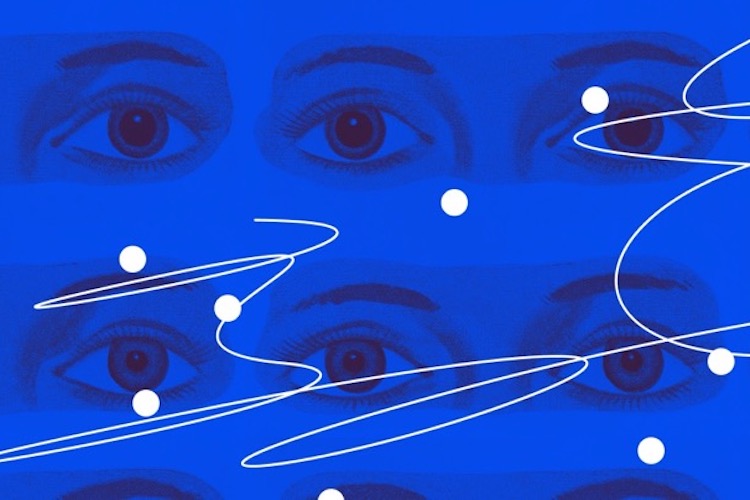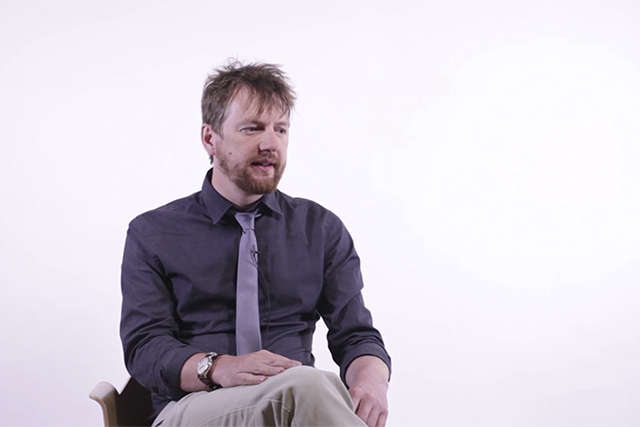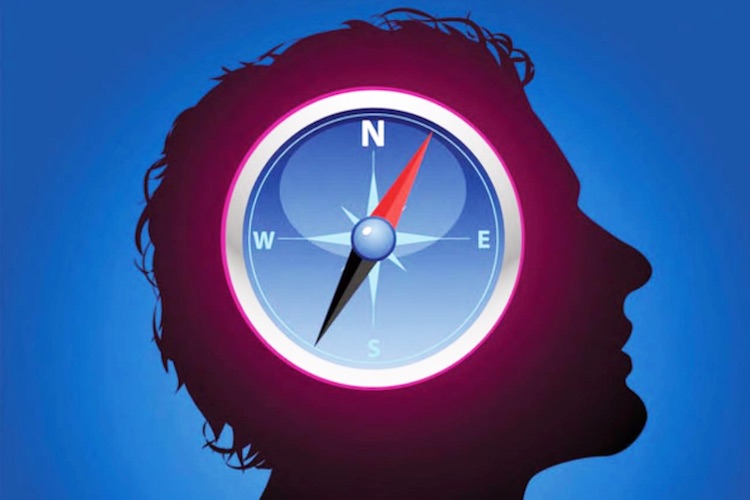Hallucinations
Neuroscientist Paul Allen on schizophrenia, self-regulation of neural activity, and famous voice-hearers
faq | August 5, 2016

A hallucination is a perception in the absence of any external stimulation, which has the quality of a real perception. Hallucinations can occur in all sensory modalities: auditory, visual, tactile, and even olfactory. Probably the most common type of hallucination involves “hearing voices” – referred to as an auditory verbal hallucination. These are common in psychiatric illnesses, such as schizophrenia. Hallucinations occurring in visual modalities can also be associated with pathology. Although less commonly reported in schizophrenia, visual hallucinations are sometimes reported in neurological disorders and dementias.
Introduction of the Term
Although associated with schizophrenia and other psychiatric illnesses such as bipolar disorder, auditory hallucinations are not always associated with illness. In some instances, sleep deprivation can cause hallucinations. Cannabis and stimulant drugs can also cause perceptual disturbances in some people. Experimentally, sensory deprivation has been shown to cause hallucinations. In the 1960s, there were some experiments (that could not be conducted now due to ethical requirements) where people would be kept in the dark rooms with no sound and sensory input. Eventually, people started to hear and see things. So, hallucinations can occur in healthy people as well as in people with psychiatric illnesses.

Proposed Theories Behind Mechanisms of Auditory Hallucinations
When patients are experiencing auditory verbal hallucinations or voices, some studies using brain imaging have shown that a part of the brain called Broca’s area becomes more activated. This is a motor area in the inferior frontal part of the brain that is important for producing speech – when you talk, Broca’s area is working! Some of the first people to explore this phenomenon were Professors Philip McGuire and Sukhi Shergill at King’s College London. They showed that Broca’s area was more active in patients when they were experiencing auditory verbal hallucinations compared to when their voices were absent. This seems to suggest that auditory verbal hallucinations are generated by our brain’s speech and language areas. This has led to ‘inner-speech models’ of auditory hallucinations. When we’re thinking about something, we are engaging in ‘inner speech’ – our inner voice that ‘narrates’ our conscious world. For example, when we are thinking, “What am I going to have for dinner?” or “What’s the weather going to be like tomorrow?” – we are using inner speech, which we think also activates Broca’s area.
But how is this inner speech experienced as external or as emanating from a nonself source? Inner-speech models of auditory verbal hallucinations propose that voices are internally generated thoughts or internally generated ‘inner speech’, but that these are somehow misrecognized as external or alien voices. This then invokes more complicated models about how we monitor our own inner speech.
Chris Frith and others have proposed that when we’re engaging in thought and inner speech, our Broca’s area sends a signal to a region of our auditory cortex called Wernicke’s area. The signal informs the auditory cortex that the speech being perceived is self-generated. This happens because the forward signal supposedly dampens down neural activity in the sensory cortex, so activation is lessened compared to external auditory stimuli – like when someone is talking to you. This is known as the self-monitoring model, and it is proposed that in people experiencing auditory verbal hallucinations, there is a deficit in this self-monitoring process, resulting in an inability to distinguish between internally generated and externally perceived speech. Whilst evidence supporting this theory is a bit weak at the moment, it has certainly been one of the most influential neurocognitive models of auditory hallucinations in the last twenty or thirty years.
Consequences of Hallucinations
In schizophrenia, around 70% of patients experience hearing voices to some degree or another. Sometimes the voices ‘respond’ to pharmacological treatments, but sometimes they do not. Generally, but not always, voices can have a negative impact on people’s health and their life. For example, people who hear voices but do not respond to treatment may be at greater risk of suicide. Sometimes, the voices are telling them to harm themselves. Even engaging in everyday situations, you can imagine how difficult this can be if you are constantly hearing a voice that is derogatory and abusive.

It should be pointed out that there are many people with no psychiatric diagnosis who report hearing voices. In these people, their voices can be quite positive experiences, quite comforting, or even guiding. Professor Iris Sommer, from the Netherlands, has done a lot of research into this. She identified a group of non-patient voice-hearers who function well. Their ‘voices’ are described as positive, helpful, and reassuring experiences.
Treatment of the Hallucinations
People diagnosed with schizophrenia are usually treated with ‘antipsychotic’ medication. These medications block postsynaptic dopamine receptors in an area of the brain called the striatum. Antipsychotics are effective in many patients, and as a result, their psychotic symptoms diminish to some degree, particularly symptoms like auditory hallucinations and delusions. However, it seems in a lot of patients; their symptoms do not respond well to antipsychotics. In about 25-30% of patients who hear voices, medication has little effect. There are also serious side effects associated with antipsychotic use, so this medication is not suitable for everyone with the illness.
In terms of other treatments, there is a whole range of non-pharmacological interventions. These also have varying degrees of success, e.g., Cognitive Behavioral Therapy (CBT). CBT for psychosis is slightly controversial since quite a few researchers suggest that it has very little effect on symptoms and overall outcomes. There are CBTs that are designed specifically for patients who hear voices. These therapies usually try to change the patient’s appraisal of the voice so patients experience the voice as less negative and, therefore, less distressing for them. The efficacy of this treatment is questionable.
I am currently leading a study at King’s College London, where researchers are trying to see if they can get patients to self-regulate the neural activity in their auditory cortex. This is achieved by using ‘real-time fMRI neurofeedback’. For this, an MRI scanner is used to measure a signal coming from the auditory cortex. This signal is then fed back to the patient using a visual interface that the patient must learn to control (i.e., move a gauge up or down). Ultimately, it is hoped that we can train patients that hear voices to control their auditory cortex activity, which may allow them to control their voices more effectively. Researchers are not sure yet if it will have any clinical efficacy, but some pilot data will be available in the next few months.
Prevalence in the Population
About 24 million people worldwide are diagnosed with schizophrenia, and about 60 or 70 percent of these will, at some point, have heard voices. It has been reported that in the general population, between five and ten percent of people with no psychiatric diagnosis also hear voices at some time or another. Most of us have had the experience of thinking that someone is calling our name and then realizing there is no one around. So there is evidence that this is an experience that happens outside schizophrenia and psychiatric illnesses. Auditory hallucinations are more common than we think, although it’s hard to tell what the actual epidemiological statistics are.
The most famous voice-hearer was probably Joan of Arc. More recently, Syd Barrett, founder of Pink Floyd, suffered from schizophrenia and heard voices. However, many people, again, who aren’t diagnosed with a psychiatric illness hear voices but experience them in a very positive way. They can use voices to feed into their art. Some people, for example, have musical hallucinations. This might be very similar to, or just a type of vivid auditory imagery – they can vividly hear music in their head. Scientists are not sure if it can be considered to be the same as hallucinations.
Unanswered Questions
Science doesn’t currently have a definite answer on what happens in the brain when an individual hears voices. The other problem is – researchers don’t know yet why people perceive them as being alien or emanating from a ‘nonself’ source. It’s important to try to understand the phenomenological aspect of the experience that voice-hearers describe. For example, when people are tired or take stimulant drugs, they might experience hallucinations, but they don’t necessarily perceive them as coming from a nonself source. The problem is why people lose this sense of agency when they hear voices. Even if we assume auditory verbal hallucinations occur because the auditory cortex is too active, why is it that people then think that this is the voice of God, or a sinister or secret agent, or alien species trying to talk to them? The belief structures that people put in place around their voice is also important for us to try to understand.The content of the auditory hallucinations and where this is coming from is another issue: are they voices produced by inner speech, or are they stored memories? What can be said with some certainty is that the sensory experience involves activation in the auditory cortex in speech and language areas. This doesn’t tell us anything about the emotional content of these voices, which can often be distressing. This then implies that there is a problem in the brain when it processes emotional information. Also, two people can experience hallucinations very differently, meaning that the brain mechanisms involved could be quite different.
Edited by Maria Budrytė






























